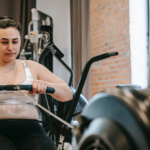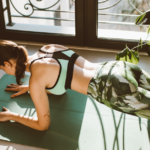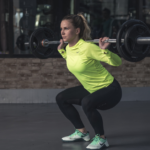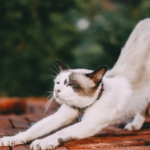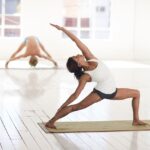Ease Joint Pain By Improving Your Range Of Motion
Do you frequently feel tense and sore, even if you sit at a desk all day? Does sitting up from your favorite chair make you feel older than you are? It might be a sign of an underlying condition such as arthritis. But it could also stem from limited mobility or a compressed fascia, the soft tissue that connects your muscles. A physiotherapist can show you how to roll different types of joints and alleviate your aches and pains over time.

Understanding Joint Movement
In physiotherapy, joint movements are broken down into basic motions that support more complex motions: gliding and rolling. Because physiotherapists can’t look inside their patients’ joints to assess a problem, they evaluate Osteokinematics (visible movements) and Arthrokinematics (movements that the patient feels) to determine the source of the problem.
Physiotherapists look at several types of Arthrokinematic motion to determine the issue:
- Joint play: Involuntary or passive movements that the patient can’t perform without contracting their muscles
- Component movement: Involuntary or compulsory joint movement that happens outside the joint during motion
Think of your joints as interconnected cogwheels. When your physiotherapist performs an Arthrokinematics roll, they move the joint so that a point on one part of the wheel touches another point on a different wheel. However, rolling is only possible if the wheels are incongruent, meaning that the “cogs” fit into one another.
Another way to imagine joint arthrokinematics is by visualizing a ball in your cupped hand. A ball is spherical, but in the context of Arthrokinematics, it is convex. That’s because it fits into the concave surface of your palm — similar to your joints.

Source: A Basic Guide to Joint Arthrokinematics | Eyes On Eyecare
If you hold the ball too tightly, it won’t be able to move. If your joints are inflamed or damaged, or the muscles around them are too tight, you will also experience limited mobility. The goal of physiotherapy is to loosen your joints, relax your muscles, and regain your full range of motion so you can maintain your quality of life.
Exercises For Joint Stiffness
Joint pain and stiffness make it difficult to perform routine tasks and can diminish your overall well-being. Fortunately, there are many exercises for joint stiffness that can alleviate these issues. Your physiotherapist can show you how to roll different types of joints and the best movements based on your symptoms and condition. Because every joint has a unique range of motion relative to others, it’s essential that you talk to your doctor before trying these exercises at home to avoid a possible injury.’
Shoulder Rolls

Source: Exercises to Relieve Joint Stiffness – Get Healthy Stay Healthy
- Stand up straight with your arms at your sides
- Roll your shoulders in a forward motion ten times
- Roll your shoulders backward ten times
- Repeat two to three times
Side Bends

Source: Exercises to Relieve Joint Stiffness – Get Healthy Stay Healthy
- Stand with your knees slightly bent, feet shoulder-width apart, and your abdomen tight
- Reach one arm up and over your head to the opposite side, sliding your free arm down your leg until it reaches your knee
- Lean into the stretch, but stop if you feel pain or tension
- Hold for ten seconds, then return to the starting position
- Repeat with your other arm two to three times
Hip Swings

Source: Exercises to Relieve Joint Stiffness – Get Healthy Stay Healthy
- Stand behind a chair with your body slightly to the side of it
- Place your hands on the back of the chair and slightly bend your knees
- Slowly lift your left leg forward, then carefully swing back
- As you move your leg, keep your back straight
- Do this motion ten times, then repeat on the other leg
Trunk Rotation


Source: Exercises to Relieve Joint Stiffness – Get Healthy Stay Healthy
- Lie on the ground on your back with your knees slightly bent
- Slowly lean your legs toward the floor on one side and hold for ten seconds
- Slowly bring your legs to the starting position
- Repeat the same motion with your other leg
- Perform this motion five times per leg, alternating each side
Hip Rolls

Source: Exercises to Relieve Joint Stiffness – Get Healthy Stay Healthy
- Lie on the ground, legs straight and spread apart
- Gently roll your feet and knees toward each other so your toes touch
- Slowly roll your feet out and repeat
Learn How To Roll Different Types Of Joints From A Physiotherapist In Calgary
Joint pain and stiffness are caused by various factors, such as injury, age, lifestyle, work, and more. No matter the reason for your pain, physiotherapy can significantly reduce your symptoms and give you the freedom to enjoy your full range of motion again.
It all begins with the right diagnosis and treatment. Visit Brentwood Physiotherapy to learn how to roll different types of joints, spinal arthritis treatment, middle back pain treatment, and more.

